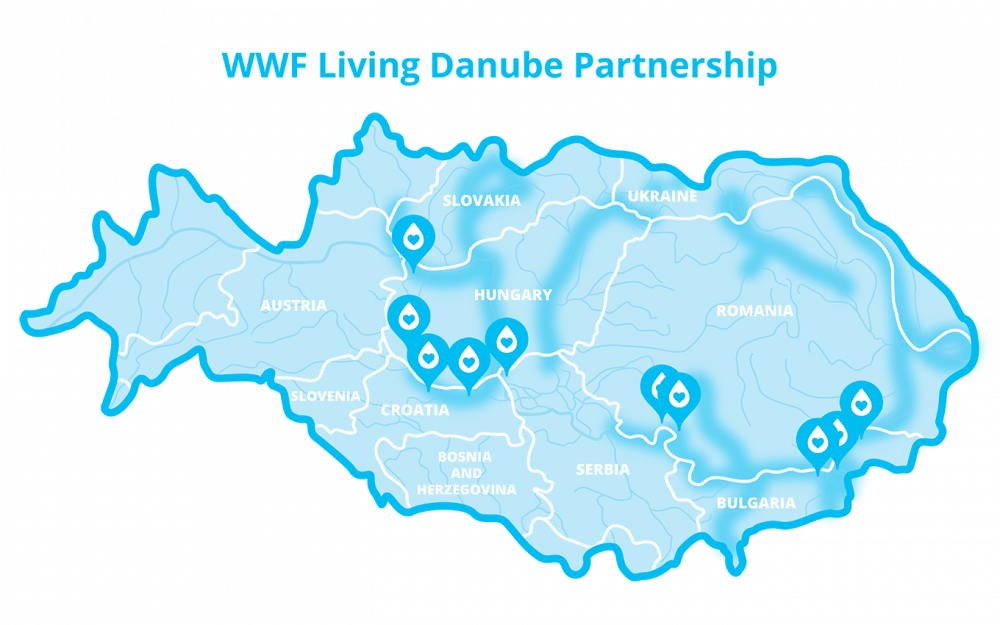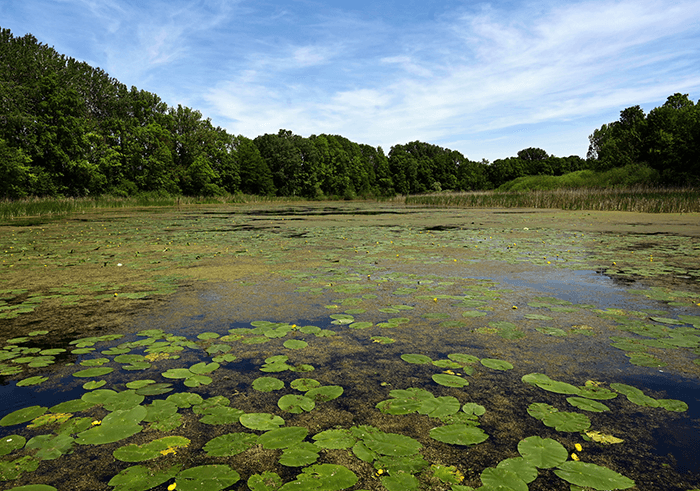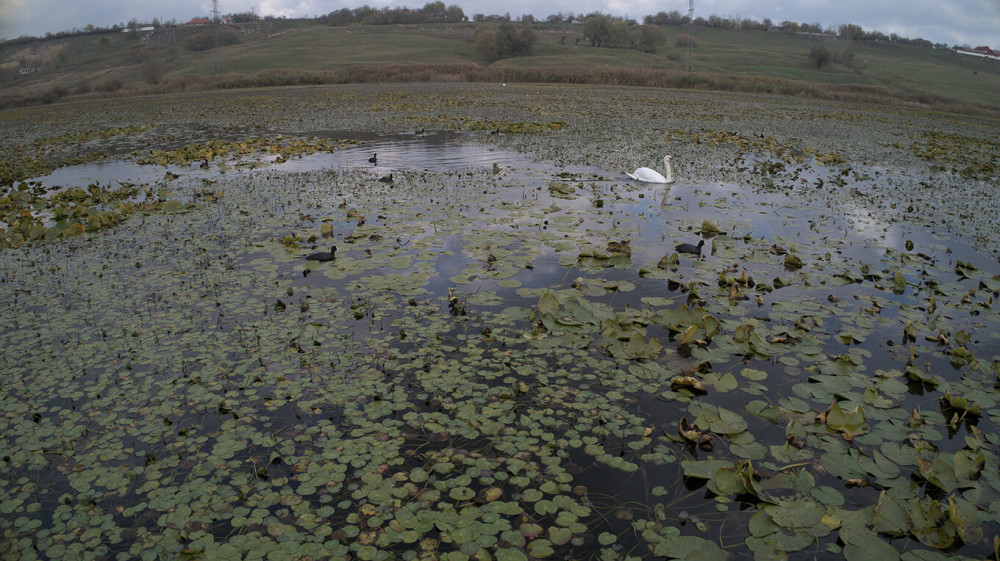

THE DANUBE RIVER BASIN - 80% OF DANUBE BASIN FLOODPLAINS LOST
The Danube River Basin is the most international river basin in the world and a very significant lifeline for Europe. On its 2,800 km journey from the Black Forest to the Black Sea, the river passes through 10 countries and drains all or part of 19 countries. Approximately 83 million people live in the Danube River Basin and more than 20 million people depend directly on the Danube for their drinking water. The basin not only unifies and sustains a wealth of diverse cultures and traditions, but also supports unique wetland habitats like the Danube Delta and the Mura‑Drava‑Danube Biosphere Reserve. However, over the past 150 years, the Danube basin and its wetlands have been much abused. Dikes, dams, cuts, bank fixation and dredging have modified large parts of the river system. More than 80% of wetlands have been lost, and with them the ecosystem goods and services they provide. The effects have been wide‑ranging and include plummeting fish and wildlife populations, decreases in water quality and damage to wetlands, which are no longer able to provide much needed biodiversity hotspots or to act as buffers to floodwaters - services that are becoming all the more valuable in the face of climate change.
 |
Although water quality in the Danube has improved in recent years, over 80% of the floodplains along the river and its main tributaries have been lost, and with them significant populations of fish and other valuable ecosystem goods and services – services that are especially important to strengthen the resilience of people and nature in the face of climate change. |
8 years of a great partnership
The aim of the Living Danube Partnership is to promote river and wetland restoration across the Danube basin – not only through the partnership’s own actions but also and especially beyond. In this spirit, we hope that the lessons and recommendations we have gathered can benefit further efforts to restore rivers and wetlands, for the benefit of people and nature.
PARTNERS
Restoring rivers and wetlands depends on cooperation between a broad range of different stakeholders, from local land owners and users, to relevant authorities, government officials and interest groups. Indeed, the Living Danube Partnership has been above all about partnership – both across the Danube river basin and within the individual projects and initiatives implemented across six countries. It has involved not only our own cooperation, but also close work with a myriad of local stakeholders and authorities. Partners from a range of backgrounds and perspectives, from water management to nature and forest management, municipalities and county governments, land owners and land users, local anglers and hunters as well as entrepreneurs, have come and worked together to restore rivers and wetlands for the benefit of people and nature. Their cooperation promoted knowledge and awareness, built trust and gave inspiration that will be carried forward in future initiatives.
 |
If there is one key lesson that we have learned over the past eight years, at basin level and through individual projects, it is the power of partnership – that by working together we can achieve more than working alone. Together possible. |
AWARD WINNING PARTNERSHIP
|
WORKING WITH PARTNERS
|
RIVER AND WETLAND RESTORATION PROJECTS
One focus of the Living Danube Partnership is on demonstrating the feasibility and benefits of river and wetland restoration. River and wetland restoration projects are by their nature complex and need time to sort out technical challenges and align interests of land owners, land users and relevant authorities. The Partnership has supported nine restoration projects across six countries (Austria, Hungary, Croatia, Serbia, Romania and Bulgaria) and identified further sites for future restoration. The projects are concentrated in and thus contribute to realising the Lower Danube Green Corridor (shared by Romania, Bulgaria, Moldova and Ukraine); and the Mura‑Drava‑Danube Transboundary Biosphere Reserve (shared by Austria, Slovenia, Hungary, Croatia and Serbia).
|
|
Bulgarian project video - Persina, the island of pelicans The island of Persina is an important natural treasure, where pelicans, once a rarity throughout Europe, nested. The island, rich in freshwater swamps, floodplain forests and agricultural areas, is surrounded by a flood protection embankment, through which sluice gates let the water of the Danube into the interior. By modernizing these structures and thanks to the up-to-date monitoring of the water level, we have achieved that life is returning to the area again. |
|
|
Romanian project video - The huge floodplains of Gârla Mare and Vrata Speakers from WWF Romania: Hanny Bratu - Communication Lead, Iulia Puiu - Senior Project Manager and Camelia Ionescu - Freshwater manager |
|
|
Hungarian project video 1. - The Old Drava backwater The Old Drava backwater is located in one of the most beautiful parts of the Croatian-Hungarian border, rich in natural values - but its water level has gradually decreased in recent years. To save the area’s valuable wildlife and improve the backwater’s water supply, we built a water-retaining structure with fish ladders in partnership with local water and nature conservation directorates. |






